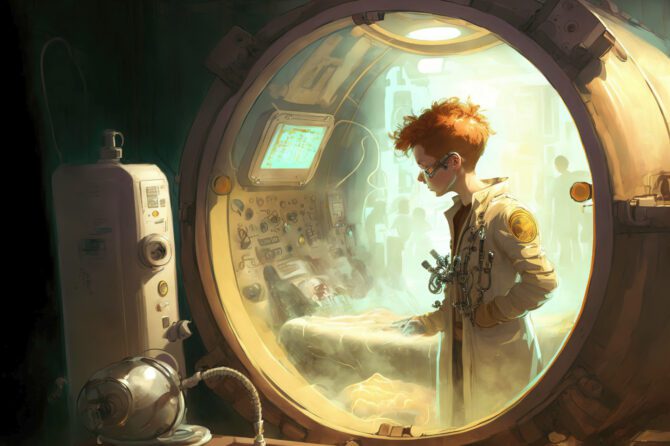
Hyberbaric Therapy for Pilonidal Wounds
Is hyperbaric therapy a good solution for pilonidal wounds that won’t heal?
We often see patients who have spent a great amount of time, expense and effort in trying to get wounds to heal after failed pilonidal surgery. One of the treatment modalities that is used at times is hyperbaric oxygen therapy.
Hyperbaric oxygen therapy involves breathing pure oxygen in a pressurized environment. This increases the amount of oxygen in the patient’s bloodstream, and subsequently in their tissues. It is theorized that this plays a beneficial role in wound healing, especially in situations where a patient has a wound in an area with a poor blood supply, and therefore, low tissue oxygen levels (this is called tissue ischemia). Typically, hyperbaric oxygen treatments are around 2-3 hours long. Patients are placed in a compression chamber for that period of time, and a course of treatment is often at least 20 treatments, and may cost $100-$1000/treatment (usually covered by insurance). Smartphones and other electronics are not allowed in the chamber.
So, you can see that it is not easy, cheap or convenient. The question is whether it is worth it, and the answer has to come from the patient and family. But, here are some facts that may be helpful in deciding if it is a therapy to try:
- Pilonidal patients are usually young and healthy and tissue ischemia is not usually a problem.
- The gluteal area has an extremely rich blood supply, so again, ischemia is not a problem.
- There are few studies that actually demonstrate the effectiveness of hyperbaric oxygen therapy on pilonidal wounds. The few that exist suggest that wound healing may be slightly sped up, but do not demonstrate that it will make a non-healing wound heal.
- Documenting that a wound initially healed is a very different fact than showing that it stays healed. There are no studies showing that using hyperbaric therapy for a period of time to get a wound to heal will make that healed wound strong and durable, and prevent recurrent pilonidal disease.
- The reason pilonidal wounds may not heal has to do with their location in the gluteal crease. The environment in the crease is moist, has pressure, promotes bacterial growth, and may be low in oxygen. A treatment for an few hours now and then will not change that in the long run.
So, is it worth the time and trouble? There certainly is no harm in giving it a try, but it is a lot to go through. In some ways it is similar to the wound VAC device, in that it may give the illusion of healing, but the healing doesn’t last permanently.
In our opinion a cleft lift is a quicker, easier (and often less expensive) solution that has a much higher success rate (about 95% if the patient has had previous failed surgery). If you contact us and send us photos, we can quickly give you an idea if it is a better solution.
